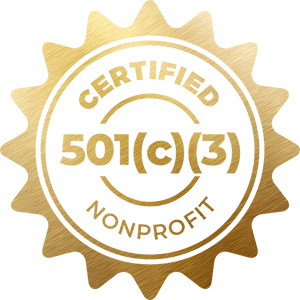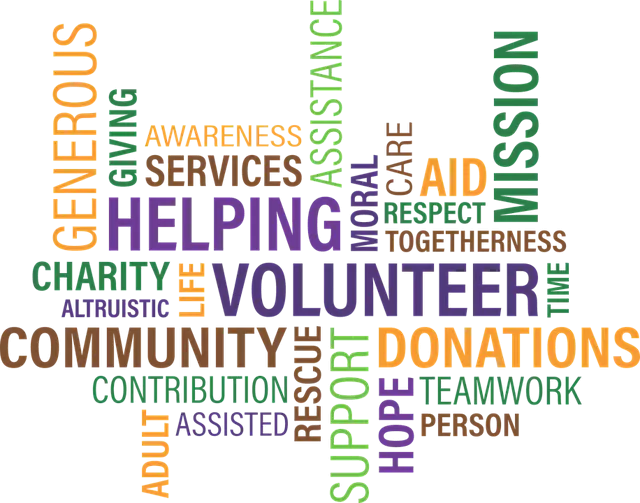Leading Nonprofit Company: Offering Strategic Assistance for Mission-Driven Teams
Leading Nonprofit Company: Offering Strategic Assistance for Mission-Driven Teams
Blog Article
Exploring the Diverse Functions and Duties of a Nonprofit Firm in Dealing With Social Issues and Supporting Modification
Not-for-profit agencies work as vital agents of adjustment within culture, taking on a myriad of social issues via diverse methods. Their duties prolong past plain solution stipulation; they take part in advocacy, resource mobilization, and neighborhood outreach, often acting as a bridge between marginalized populations and important solutions. By cultivating partnerships and utilizing culturally pertinent strategies, these companies resolve the origin of social difficulties. Yet, the intricacies of their duties elevate important inquiries about performance and sustainability. What are the implications of these varied functions on long-lasting neighborhood effect?
Understanding Nonprofit Company Roles
The efficiency of nonprofit agencies pivots on a clear understanding of their diverse duties within society. Not-for-profit firms usually work as solution carriers, providing important programs and resources to underserved populaces.
In addition, nonprofits play an important duty in advocacy, increasing awareness and affecting policy choices that influence their neighborhoods. By taking part in research study and public education and learning, these companies aid shape public discussion and advertise educated decision-making - nonprofit agency. They also function as systems for volunteerism, mobilizing community participants to contribute their time and abilities towards collective objectives
Additionally, not-for-profit agencies often serve as conveners, bringing with each other varied stakeholders to cultivate collaboration and cumulative impact. This joint technique enhances their ability to deal with facility social problems efficiently. Comprehending these complex roles is critical for taking full advantage of the possibility of nonprofit agencies in producing lasting social modification and improving overall area well-being.
Community Interaction and Outreach
Efficient neighborhood involvement and outreach are essential parts of nonprofit firms' methods to construct and promote links trust fund within the neighborhoods they offer. These initiatives focus on recognizing neighborhood demands, promoting awareness of available resources, and encouraging engagement in programs developed to resolve social problems. Not-for-profit companies use a range of approaches to involve with community participants, such as workshops, informative sessions, and collaborative events.
Outreach campaigns serve to strengthen relationships with diverse populaces, specifically marginalized groups who may encounter barriers to access. By utilizing culturally pertinent interaction strategies and leveraging regional partnerships, nonprofits can boost their visibility and demonstrate their dedication to community empowerment. This method not only cultivates a sense of belonging but likewise enhances the likelihood of continual involvement.
Moreover, effective community engagement exceeds mere involvement; it involves actively listening to community members' responses and including their insights right into program growth. This joint process makes sure that the solutions provided are receptive, appropriate, and customized to the special challenges encountered by the area. Eventually, promoting solid links through interaction and outreach can bring about more impactful interventions and a better cumulative initiative toward promoting positive social modification.
Campaigning For and Plan Impact
Advocacy functions as an essential device for not-for-profit companies to influence public plan and drive systemic change. By leveraging their experience and area insights, these companies can effectively represent marginalized populations and address pushing social issues. Nonprofits involve in advocacy via numerous techniques, consisting of public awareness projects, grassroots mobilization, union building, and straight lobbying of policymakers.
Via these efforts, nonprofit companies aim to form regulations and policy structures that straighten with their goal and the demands of the neighborhoods they serve. They perform research, gather data, and share compelling narratives to highlight the seriousness of certain concerns, ensuring that decision-makers are informed and motivated to act. click here to read This procedure not only magnifies the voices of those influenced by social injustices but also fosters a more fair and inclusive policymaking setting.
Furthermore, campaigning for initiatives frequently seek to develop long-term structural modifications, dealing with source as opposed to merely easing signs. By prioritizing policy influence, not-for-profit companies add to a wider understanding of social obstacles and advertise options that can cause lasting improvements in societal health. Ultimately, advocacy is basic to the transformative duty nonprofits play in producing a simply and equitable culture.
Fundraising and Resource Monitoring
Nonprofit agencies count on robust fundraising and resource administration methods to support their advocacy efforts and sustain their goals. By utilizing a multi-faceted method, nonprofits can alleviate the threats connected with reliance on a single financing source.
Source management is equally vital, as it entails the strategic allowance of both financial and human resources to take full advantage of impact. Nonprofits need to establish spending plans that align with their goals while making sure openness and liability to stakeholders. This entails normal monitoring of expenses and readjusting strategies as needed to Click Here enhance source use.

Collaboration and Partnerships
While numerous organizations pursue their objectives independently, cooperation and collaborations can substantially improve the performance of nonprofit agencies. By collaborating with various other nonprofits, government entities, and personal field organizations, nonprofits can pool sources, share experience, and enhance their influence on social concerns. Collaborative initiatives commonly result in cutting-edge options that may not be possible individually, leveraging the strengths of each partner to attend to intricate obstacles.

Inevitably, reliable partnership calls for clear interaction, shared goals, and common regard amongst partners. By accepting a participating strategy, nonprofit firms can create sustainable networks that not just address instant social issues yet likewise contribute to long-lasting systemic adjustment, cultivating a more equitable society. With partnership, nonprofits can prosper and maximize their potential for significant effect.
Final Thought
Nonprofit companies work as important entities in resolving social issues and fostering modification within areas. With diverse functions such as area campaigning for, interaction, and source administration, these companies properly mobilize sources and assistance for underserved populaces. Their collaborative efforts with different stakeholders boost the capability to influence public policy and promote structural adjustments. Ultimately, the diverse functions useful reference of nonprofit companies dramatically contribute to the quest of social justice and the enhancement of community health.
Comprehending these diverse duties is essential for taking full advantage of the capacity of not-for-profit companies in producing lasting social change and improving overall area wellness.
Efficient neighborhood engagement and outreach are basic components of not-for-profit companies' methods to foster links and construct depend on within the communities they serve. By functioning together with other nonprofits, federal government entities, and private sector companies, nonprofits can pool resources, share knowledge, and intensify their influence on social concerns.Nonprofit agencies offer as vital entities in resolving social issues and cultivating change within communities - nonprofit agency. Inevitably, the multifaceted roles of not-for-profit agencies substantially contribute to the search of social justice and the renovation of area well-being
Report this page